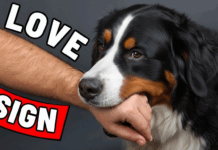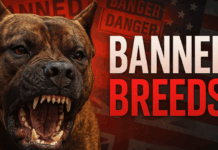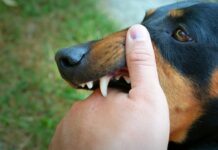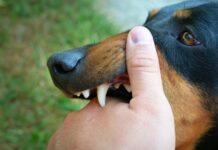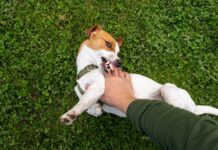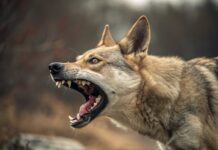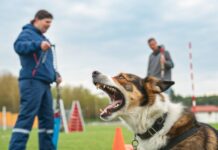Last Updated on March 2, 2023 by Dogs Vets
How To Read Your Dog’s Behavior And Body Language
Dogs have their uniqueness, including their way of expressing themselves. They use sounds and signals to mean something.
Like people, they can also use their body language to share their emotions and intentions. But they do it in a very different way. Thus, sometimes it leads to misunderstandings in human-dog communication.
In order to build a lasting bond and trust with one another, it’s important to be familiar with your pet’s reactions and behavior.
To be a responsible owner, one must be able to read their facial expressions, body posture, and other types of language they normally show. Learning to communicate with them more effectively is best if you love caring for them.
This article will guide you in reading and understanding their behavior and body language.
-
Stressed And Anxious
There are instances when dogs feel stressed out and anxious. Their feelings of stress, anxiety, and sadness can turn into depression. They have certain positions when they tend to feel this way. These can include keeping their tail down and lowering their body.
They do rapid panting and sweating through their pads. Usually, they will turn their head away to avoid eye contact and sniff the ground instead.
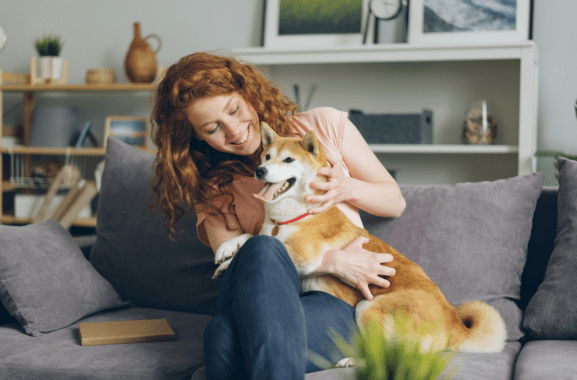
Like people, dogs can also yawn, but not because of tiredness or boredom. It’s because it’s their way of calming themselves in uncomfortable situations. Thus, it will help to yawn at your dog to comfort them if you think they are uncomfortable.
Additionally, dogs can experience anxiety. They tend to become anxious when left alone. When they are eager, they will likely bark. So, it’s best to help a dog with separation anxiety.
You must let your dog be alone for at least 30 minutes. Determine if they can manage to be alone within such time. If they can, it will be easier for you to leave them for hours or even days.
-
Aggressive
Dogs can be aggressive at times. When they do, they will usually have raised and bristled tails. They also wag their tails with maintained stiff movements.
Moreover, they narrow their eyes while having a hard stare. Their cold and hard look also signals a threat. They have their nose wrinkled, lips curled, and mouths widely opened.
They maintain a stiff-legged stance while their body is slightly leaning forward. Dogs tend to be aggressive when upset. They can also form a smile but beware. Sometimes their smiles show bared teeth, intended to give people a warning.
However, there is a way to prevent your dog from being aggressive. Eye contact is a crucial signal for dogs. Therefore, try to look away to calm the situation.
Aggressive dogs have lip lifts turning them into a snarl, getting ready to snap and bite. Lastly, they tend to bark and growl at people, especially strangers.
-
Frightened
Scared dogs tend to lower their body. Their eyes are partly closed and likely to turn heads, avoiding eye contact. Moreover, their tails are flat and mostly steady at the back of their body.
They also involuntarily urinate sometimes and have sweaty footprints. Additionally, they likely roll into their back to expose their belly.
You may misinterpret this. You’ll think that they want a belly rub, but the truth is, they may do this to let you know that they are not a threat. Lastly, if they encounter dominant dogs, they may lick their faces.
There are times when you can see them shaking. The first thing that will cross your mind is that they are sick. But dogs tend to shake because it may be due to extreme fear and worry.
Understanding what body language they use when they’re scared is crucial. It will help if you know what situations trigger their fears. It’s best to allow them to calm down in their own way.
-
Alert
Dogs always stay alert, especially if they sense a threat or danger. Furthermore, they tend to be vigilant when something grabs their interest. It can be an item, the presence of danger, other dogs and animals, or a particular situation.
When they’re alert, you can observe their tails are in a horizontal position. They also move them a little from side to side.
Their ears point forward and may sometimes twitch to hear different sounds. Also, their eyes are open wide to check their surroundings.
Their mouths are usually closed, and their faces have smooth noses and foreheads. Their stance is leaning a bit forward. They often bark when they feel danger and give warnings.
-
Calm And Relax
Dogs maintain their body in a neutral position. Their tails are usually down and relaxed with ears up but not forward. Also, they keep their head high with relaxed, open eyes. They slightly open their mouth with exposed tongues.
They usually have light breathing. You can observe their soft eyes with relaxed lids. It will help if you discover their baseline body language. If they maintain that, it’s a sign that they are calm and relaxed.
-
Happy And Playful
It feels great when you see your dogs being playful and happy. You can see them doing exaggerated, fast, free movements. It’s because they want you to pay attention to them.
You can observe their cute helicopter tail wag. It’s also referred to as a happy wag. According to a study, dogs feel optimistic and sound when they wag more on the right side. They will likely execute their ‘play bow’ to start playing with you.
It’s essential to make them more engaged in fun and physical activities. That way, you are ensuring their sound and happy disposition. They will feel that you understand and give them utmost importance, like how they feel for you.
Conclusion
Communication is vital for a good relationship between you and your canine companion. Dogs can’t speak words like people, but they try their best to talk with you based on their communication capacity. Their body language means a lot.
They’ll also teach you that there are secret messages behind every action. Truly, in a dog’s world, actions speak louder than words.
Facts Check
We hope you enjoyed this article… What are your thoughts?
Pls feel free to share this article!

